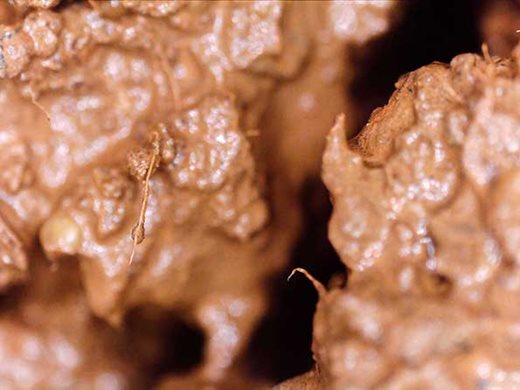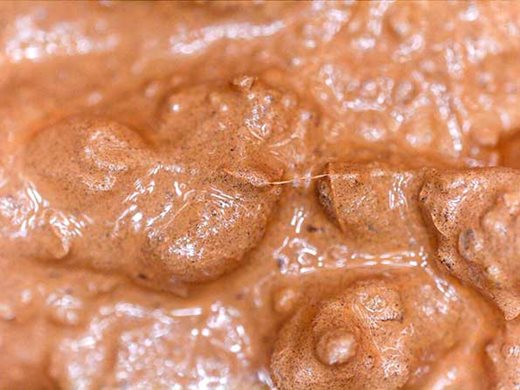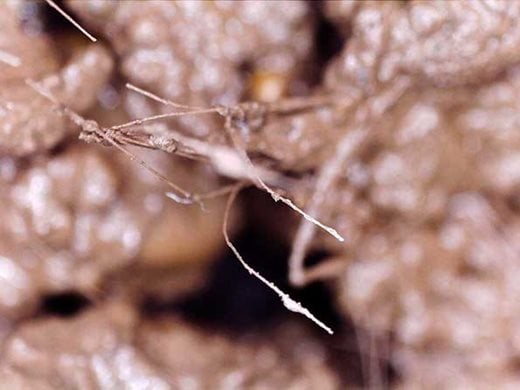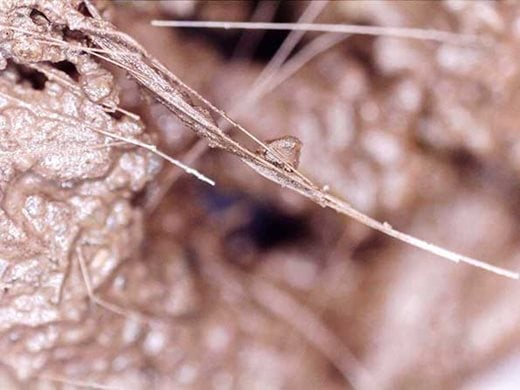Booth S11215
Anyone even remotely familiar with UltraFiber 500 is aware of the long list of benefit and features associated with it. Among these features, the most pronounced is UltraFiber’s ability to absorb water. UltraFiber 500 is incredibly hydrophilic by nature, meaning is readily attracts and absorbs water. This is in stark contrast to synthetic fibers - such as polypropylene fibers and glass fibers - which are almost universally hydrophobic, repelling water.
Hydrophilia is the tendency to absorb, combine with, or attract water. This quality is the root of many of UltraFiber’s unique characteristics and benefits. As a product derived from natural cellulose, UltraFiber has the amazing capacity to absorb, retain, and release water over time. Coming in contact with water, shredded or fluffed UltraFiber will rapidly draw in and absorb the liquid. From there, UltraFiber will retain the moisture until it is drawn out by other absorptive materials such as unhydrated cement. In a recent trial, Solomon Colors found that pure UltraFiber fluff will hold twenty times its own weight in liquid.


UltraFiber 500 dispersed in concrete is barely visible
The first way this hydrophilia benefits concrete is through improved internal curing. In most practical applications, a certain percentage of the cement in a concrete mix will remain unhydrated. This means, insufficient water is present to complete the cement reaction. Even though the concrete is batched with plenty of water, 30% or more of this water can be lost to evaporation before the concrete has finished curing. Every ounce of unhydrated cement represents a greater potential for internal cracking and lost strength. A study conducted by Dixon & Associates found that UltraFiber 500 batched in concrete could retain 85% of its own weight of water. As the concrete cured, water was released to more fully hydrate cement. After a 28 day curing period, the samples with UltraFiber had less unhydrated cement and fewer, if any, internal micro-cracks.
The second benefit as a results of this quality is improved color and visual appeal. UltraFiber 500 absorbs and holds pigment, in addition to water. The same trial conducted by Solomon Colors illustrated this by using a water-based stain. UltraFiber took on the color of the stain and retained it, even after the water dried. At the same time, a polypropylene fiber sample did not take on any color with residual pigment wiping off. This makes UltraFiber a superior fiber for integrally colored concrete, stained concrete, dyed concrete, and other colored concrete applications.
The majority of microfibers for concrete are synthetic. Synthetic fibers are almost universally hydrophobic. These fibers, which are usually made of petroleum or glass products, are non-porous. They actively repel water. While this does not necessarily harm concrete curing versus concrete with no fiber, hydrophobic fibers certainly do not bring any additional hydration or curing benefits to the concrete.


Polypropylene fibers in concrete are very apparent within the mix
Where this aspect is specifically harmful, however, is where colored concrete is concerned. Consider three of the most common ways concrete is colored. The first is integrally where nonreactive elements (typically iron, titanium, and cobalt oxides) are suspended in the concrete matrix. The second are stains and dyes where pigments are carried and deposited in the pores of concrete by water or solvent carriers. The third are reactive stains where acids and other reactive elements chemically change the color of the concrete. In each of these three cases, hydrophobic synthetic fibers will avoid coloration and end up being highly visible at the surface of the concrete.
Ultimately, hydrophilic fibers are superior to their hydrophobic counterparts when designing and installing fiber reinforced concrete. Natural cellulose fibers offer hydration benefits unmatched by synthetic fibers such as polypropylene micofibers. While both kinds of concrete fiber offer plastic shrinkage cracking, only hydrophilic cellulose fibers improve internal curing characteristics. Furthermore, when adding fiber to architectural or decorative concrete applications, hydrophobic are more visible as they do not accept color. This is counterproductive to the aesthetic properties of colored concrete, concrete stains, and concrete dyes.
Explore impressive concrete installations to find inspiration for your next project.
Find out how much color and fiber you'll need for any size project.